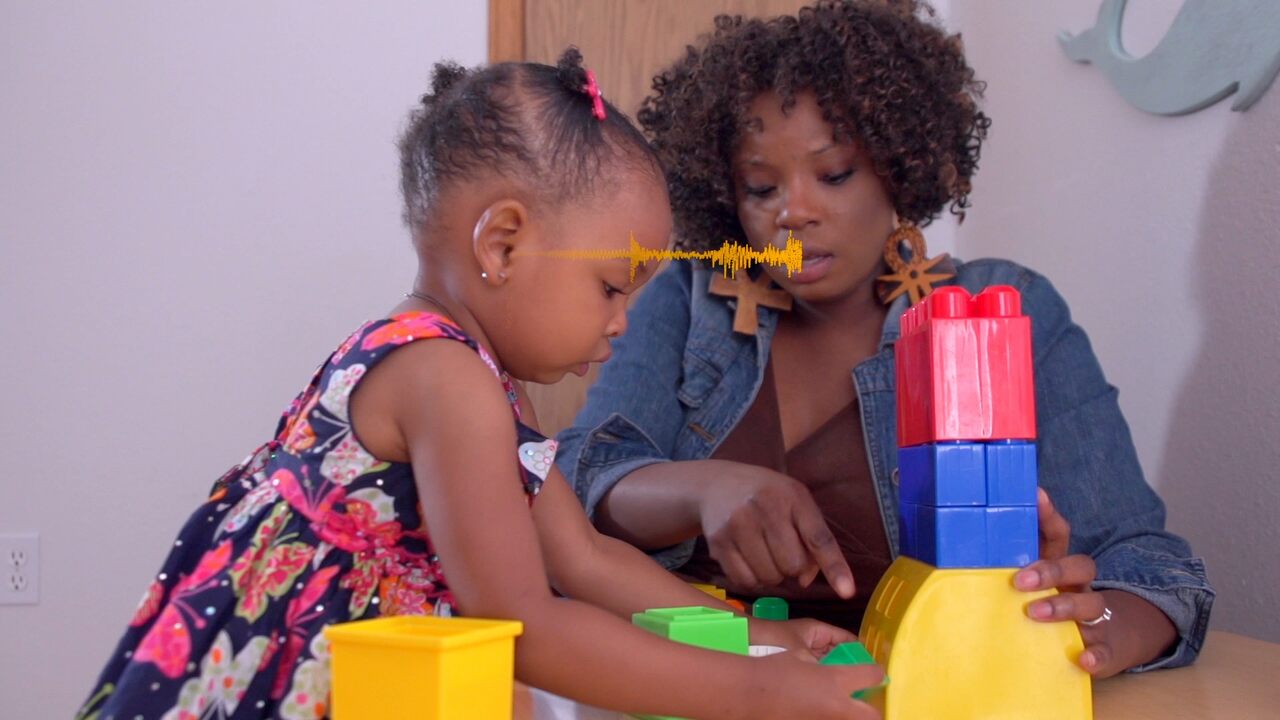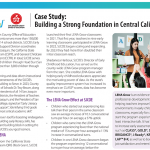2018 was momentous for LENA programs with the release of three studies on how conversational turns in early childhood correlate with brain activity, brain structure, and IQ in adolescence. We were excited to see so many questions during our webinar with the lead researchers, “The Year of the Conversational Turn,” and we’ve taken the most commonly asked and had the researchers answer them directly below. But first, what is a conversational turn and how is it counted?
A conversational turn is counted in pairs, being one utterance by adult/child and then one by child/adult in response (within five seconds). For example, if a child speaks and an adult responds, or vice versa, that would count as one turn. If the child responds to the adult within five seconds, then the adult responds again, that is considered two conversational turns.
What specific qualitative aspects of social conversation are most conducive to upwards language development?
Creating joint attention and recasting are the key “active ingredients” for language development.
Joint attention is fostered by following a child’s lead and doing what interests them, while the adult also factors that the child’s language processing speed is much slower than theirs. When achieved, contingent responses by parents and caregivers are powerful because they effectively tell the child that their behavior can control or influence the caregiver’s behavior. This is exciting because for the child, it begins to tap into the power of conversation.
Recasting is when the adult repeats some or all of the child’s words and adds new information (e.g., color of the ball) while maintaining the basic meaning the child expressed. This is helpful and most powerful for children once they begin using new words and more complex, several-word sentences.
Together, these techniques create more opportunities for the quality of conversations to increase with use and practice.
How would a child who had a rich language environment from birth compare to a child whose caregiver begins conversational turn taking and interactions in, or just prior to, the critical 18-24 month window?
First, it’s never too late to emphasize conversational turn taking! Brain plasticity is still quite high at age two, and it’s possible to make up ground quickly. In programs focused on increasing interactive talk that LENA implements through library, school district, and hospital partners, we’ve seen language skills accelerate pretty rapidly. The average age of children at the onset of LENA Start is around 18 months, and we are seeing two to three months of language skill acceleration during the course of the three-month program. For example, children who are two to three months behind their peers at the beginning of the program are able to close that gap by the time their parents complete the program.
Can children “catch up” neurologically? In other words, if they show decreased activation in Broca’s area at a young age, is there hope to increase that activation?
We don’t really have an answer to this question yet as we’re just starting to look at outcomes from intervention studies and seeing plasticity in brain areas linked to conversational turns. One caveat is that the brain is super quirky in this respect, and when children “catch up” behaviorally they might recruit an alternative brain region to do this. For example, we see this a lot in literacy research where children who are initially behind show deficits in traditional reading brain regions in the left hemisphere, but then when they catch up, they largely rely on brain regions in the right hemisphere. The same kind of things happen in people who recover from strokes who often use new brain areas to do the same cognitive task. Therefore, even if kids show differences in one specific brain region, like Broca’s area, it is possible that they could neurologically catch up using the same brain region (Broca’s area is quite plastic!) or maybe even use a new area.
The 10-year-longitudinal study mentions that the window of one to three years provides the strongest prediction for cognitive and language development, but how long in a child’s development do conversational turns predict positive outcomes?
We don’t yet have the data to answer this question fully, but we do know from other research that reading proficiency at the end of third grade is a predictor of high school graduation rates. This is a key principle behind the Campaign for Grade Level Reading. The LENA longitudinal study connected early language to children’s cognitive development between ages 9-13, so it stands to reason that the effects would continue show up when the children reach ages 17-19.
When accounting for socioeconomic status (SES), is whether the children in the studies are coming from native-English speaking families taken into account?
All three studies explored monolingual English speakers only. However, LENA’s programming works with more diverse populations — notably, Spanish-speaking families from a variety of cultures. We’ve seen very similar gains in child language skill for both English- and Spanish-speaking families enrolled in LENA programming.
Where should philanthropy be focused right now to impact parenting/caregiver conversational turns at scale?
Philanthropic investment should support parent-facing solutions that are not simply light touch, but rather drive real behavior change as evidenced by data. Parent/caregiver coaching, coupled with objective data, is crucial to increasing caregiver capacity and skills, as well as sustaining adult behavior changes around conversational turns.
Philanthropic investment allows organizations the opportunity to dial in to what research tells us makes a big difference. Supporting programs implemented in local community spaces accessible to parents and families, with built-in measures of fidelity of treatment and program effectiveness, is crucial when it comes to investing in impacting conversational turns at scale, specifically for communities of lower socioeconomic status.



